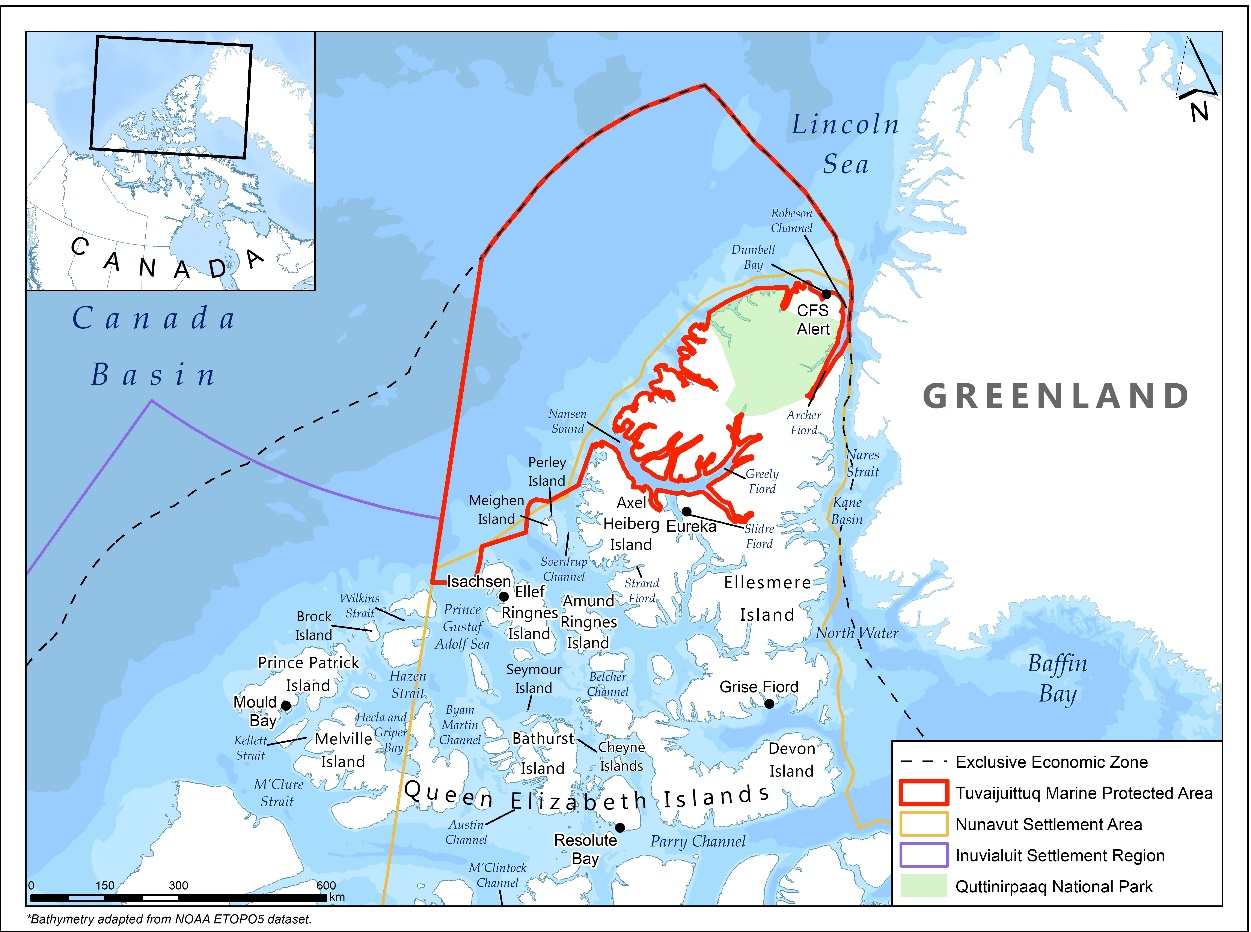Science Response 2020/056
Identification of Ecological Significance, Knowledge Gaps and Conservation Objectives for the Tuvaijuittuq Marine Protected Area
Context
The Tuvaijuittuq Marine Protected Area (MPA; Figure 1) was established by Ministerial Order on August 21, 2019 based on its importance to ice-associated species and in response to increasing accessibility for human activities in the Arctic. Protection via Ministerial Order under the Oceans Act allows the Minister of Fisheries, Oceans and the Canadian Coast Guard ("the Minister") to freeze the footprint of human activities in the area for a period of up to five years while a feasibility assessment is undertaken to determine appropriate the long-term protection tools for the area (e.g., designation as an Oceans Act Marine Protected Area [MPA] by Governor-in-Council and a National Marine Conservation Area under the Canada National Marine Conservation Areas Act).

Figure 1. Current boundaries of the Tuvaijuittuq Marine Protected Area (MPA) in northern Nunavut. Adapted from DFO (2019).
The Government of Canada, in partnership with the Qikiqtani Inuit Association and Government of Nunavut, requires a feasibility assessment for the area. This includes a biophysical and ecological overview of the Tuvaijuittuq MPA, recently published in a report by Charette et al. (2020). The report provides a comprehensive overview of the most current and available information for the area, including information to support the identification of significant ecosystem components (SECs), ecologically significant species and community properties (ESSCPs), and the identification of important areas (Charette et al. 2020). The advice arising from this Science Response Process will inform the decision-making process for establishment of long-term protections in Tuvaijuittuq and will assist in discussions of boundary (and zones if required) and inform the establishment/regulatory approaches. The advice will also inform a future risk analysis for the area, identify priority areas for protection, and refine existing conservation objectives using the most current published information available. This review will also inform subsequent advice on monitoring protocols and strategies, identification of information gaps requiring further research, and the development of a management plan for the area.
This Science Response Report results from the Science Response Process of October 6–7 and October 28, 2020 on the Identification of Key Biophysical and Ecological Features of the Tuvaijuittuq Marine Protected Area (MPA).
Accessibility Notice
This document is available in PDF format. If the document is not accessible to you, please contact the Secretariat to obtain another appropriate format, such as regular print, large print, Braille or audio version.
- Date modified: